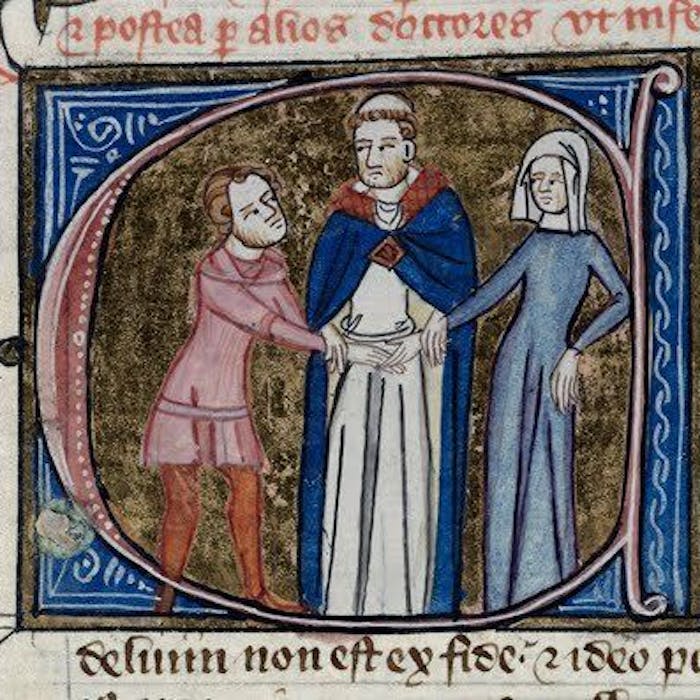
The Interdict - when the churches of medieval England and Wales went on strike
We imagine that Christianity was the bedrock of daily life in medieval Britain - in charge of the greatest occasions of life and death. Yet, during the reign of King John, the churches of England and Wales were officially closed to the citizens for over six years!
The "Interdict" as it was known came about because of a quarrel between King John and the Pope. John was not the first member of his family to have difficulties with the Church. His father, Henry II, famously had a row with his Archbishop of Canterbury (and former friend) Thomas a Beckett - resulting in the notorious murder of Beckett in Canterbury Cathedral.
King John's dispute with the Pope was also about the Archbishop of Canterbury.
Following the death of Archbishop Hubert Walter in 1205, King John wanted the chapter of Canterbury Cathedral to elect his favoured successor. However, Pope Innocent III also had a preferred candidate - his friend and eminent ecclesiastic Stephen Langton. He summoned the chapter to Rome where they duly elected Langton in 1207.
John was furious, as it was the convention that the King of England would get some say in such appointments. He refused to let Langton land in England. The Pope responded by excommunicating King John and issuing the Papal Interdict.
The Mass and other sacraments were suspended. No weddings were performed by the Church. Funerals could not take place, nor could anyone be buried in consecrated ground. Churchyards were closed, and even bishops who died during this period were buried by the roadside. Churches were forbidden to ring their bells – and given that church bells at this time served to mark the time as well as sounding warnings to the community, the loss of bells would have been a major disruption to medieval life.
However, as far as we can tell, the people of England and Wales coped quite well with living under the Interdict. There was no great uprising, it was an irritation, but largely the population seemed unaffected.
Many priests continued to quietly hear confessions, and baptism and pilgrimages still occurred. Churches continued to be built, marriages were valid because the vows in those days did not need to be exchanged in a church. The sense is that John and the country collectively shrugged their shoulders and said, “so what” to the interdict.
John finally gave in in late 1212 because the Pope was encouraging the French king to invade and depose him, and the religious strike came to an end the following year.
Langton was allowed into England in 1213, and was instrumental in working with King John's rebellious barons to create the Magna Carta - signed (reluctantly) by King John in 1215.
Ironically Pope Innocent III had by now argued with Stephen Langton and suspended him from all ecclesiastical functions - so he could no longer operate as Archbishop of Canterbury!
It must all have looked very bizarre to the ordinary people as their "betters" turned the kingdom upside down with their eternal spats.
Stephen Langton ended up the ultimate winner of these disputes. Both the Pope and King John were dead by 1218, and Langton remained as Archbishop of Canterbury until his death in 1228.
Further reading
The last lockdown: 13th-century England’s six years without Mass - Catholic Herald
Links to external websites are not maintained by Bite Sized Britain. They are provided to give users access to additional information. Bite Sized Britain is not responsible for the content of these external websites.
